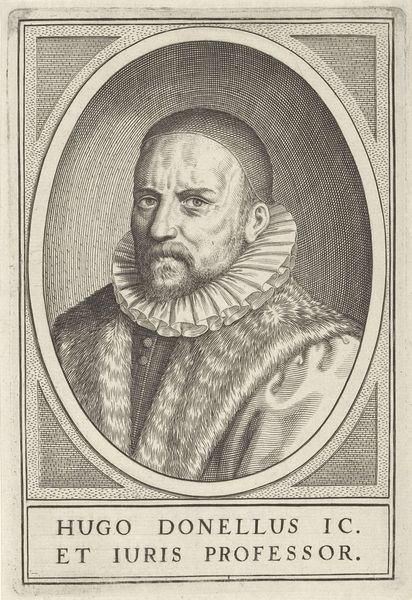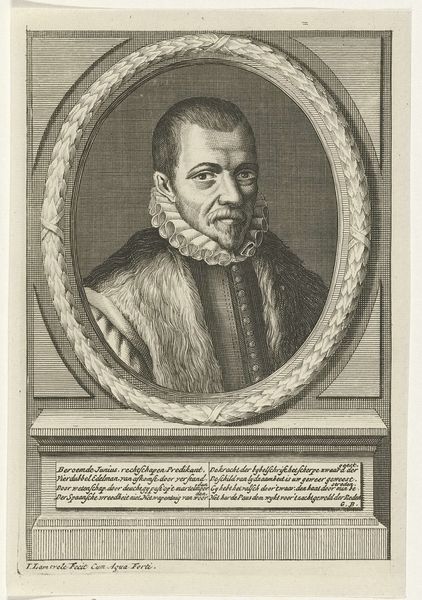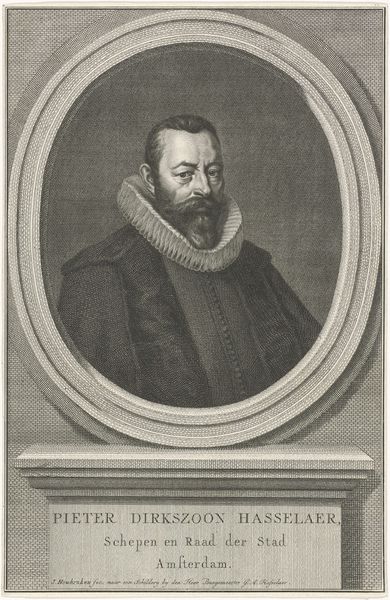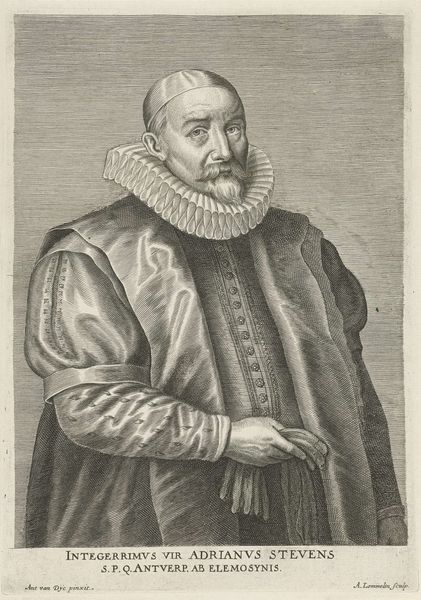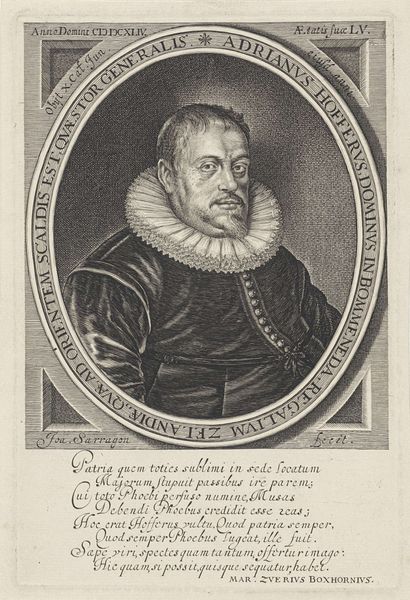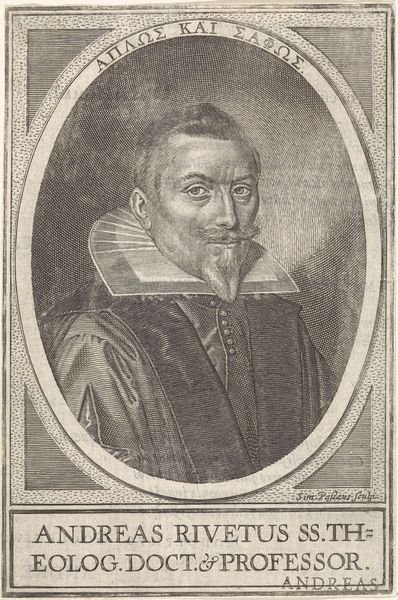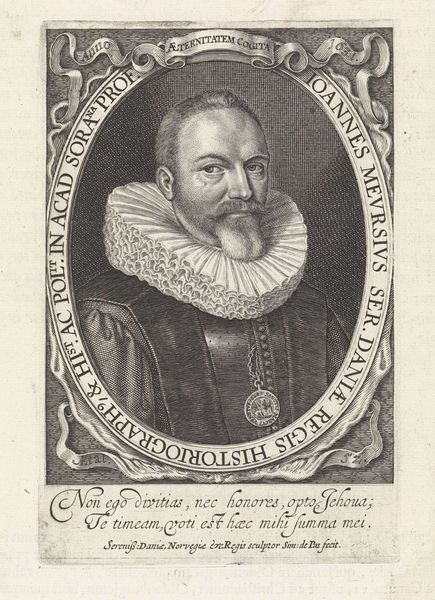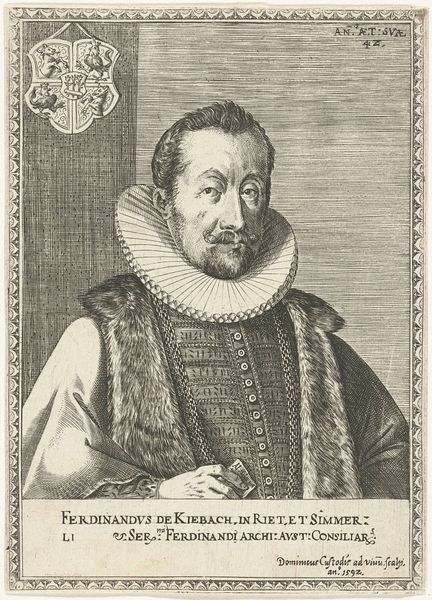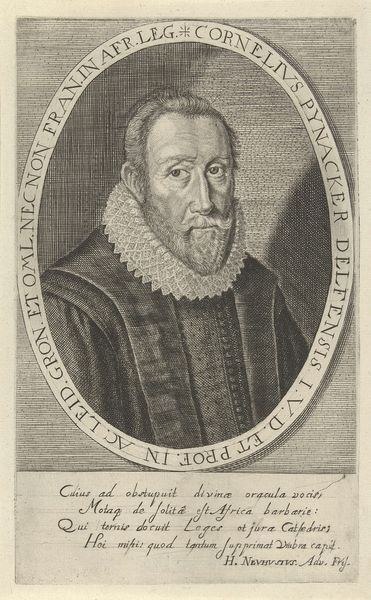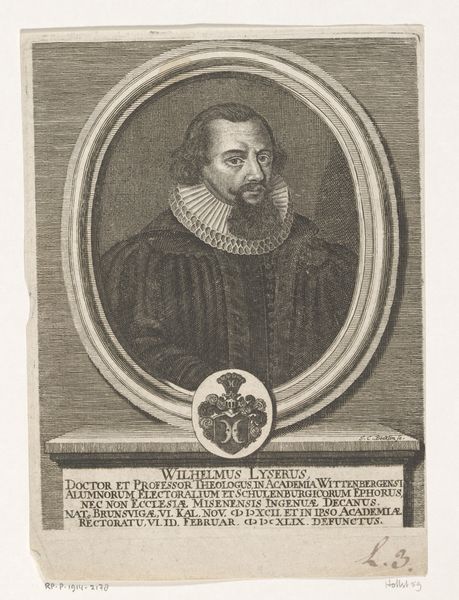
engraving
#
portrait
#
baroque
#
old engraving style
#
figuration
#
line
#
portrait drawing
#
history-painting
#
engraving
Dimensions: height 136 mm, width 88 mm
Copyright: Rijks Museum: Open Domain
Curator: Looking at this piece, I immediately think: intense scrutiny. The density of line work is almost overwhelming. It’s as though the artist aimed to capture not just the man, but his very essence… his molecular makeup! Editor: Indeed! This engraving, titled "Portret van David Harsdörffer," created in 1669, is attributed to Johann Friedrich Leonard. It's a baroque portrait, brimming with the aesthetic sensibilities of its time, but the sitter’s station and the era are equally present. Harsdörffer was an important figure—a member of the city council. Curator: You know, the precision of the lines… It makes you wonder about the personality of Leonard, the artist. What level of meticulousness are we talking? Did he eat, sleep, and breathe details? It's amazing to see such detail rendered solely through these very fine lines. Editor: Right, the technique reflects a commitment to detail but also tells us something about power dynamics. Consider how such portraits were used – as tools for constructing and conveying authority and legacy. A face etched in lines meant to endure and impress. Curator: It’s kind of like a visual fortress. The ruff around his neck... It feels almost defensive, like a sculptural barricade. You just can't touch that man unless invited. Editor: Absolutely. That ruff, so starched and structured, becomes a potent symbol of status. The composition reminds me of contemporary notions of performativity. He's playing the role of an important and immovable civic figure for posterity. And it also emphasizes his status through exclusion--ostentatious consumption during eras of austerity comes to mind. Curator: I agree entirely. And thinking about what it would mean to sit for something like this... There's something rather charming and alienating about it simultaneously. It reminds me that time is relentlessly flowing onward while we are stuck viewing only but a moment of it! Editor: It invites a deep reflection on power, representation, and the enduring nature of art as a tool of communication, as a lens of status--a fascinating blend, I must say. Curator: Fascinating indeed! It brings me to understand, in ways that touch all senses and intellect, why these portrait are worth preserving in art galleries. Editor: Right—these historical dialogues that echo into our own world, urging us to confront, question, and challenge the stories we tell and those left untold.
Comments
No comments
Be the first to comment and join the conversation on the ultimate creative platform.

